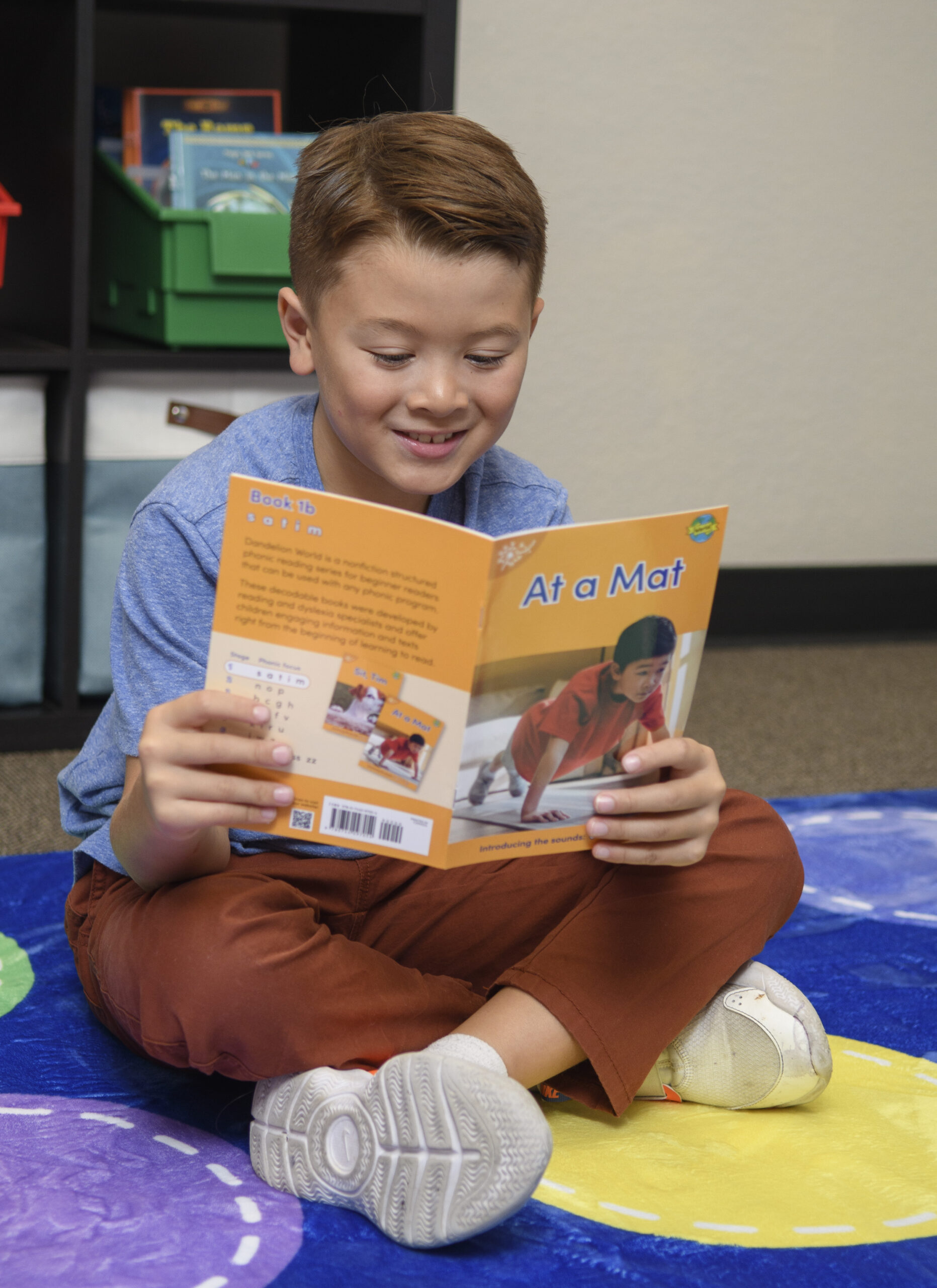Reading is a cornerstone of learning and personal development, yet many parents struggle to find ways to make reading enjoyable for their children. If you’re looking to foster a love of reading at home, integrating engaging activities can make all the difference. By making reading fun and interactive, you can enhance your child’s comprehension and ignite a lifelong passion for books. Below are five activities designed to encourage reading at home.
1. Interactive Reading Games
Interactive reading games are a fantastic way to engage young readers. They incorporate play into learning, making reading feel less like a chore and more like an adventure.
Word Scavenger Hunt
Turn reading into a treasure hunt by creating a word scavenger hunt. Start by selecting a book that your child enjoys and compile a list of interesting or challenging words for them to find as they read. This not only encourages attention to detail but also boosts vocabulary and word recognition skills. As an added incentive, offer small rewards or tokens for each word they successfully locate. This keeps motivation high and transforms reading into a rewarding experience.
Incorporate variations to keep the game fresh and exciting. For instance, you can create themed hunts based on specific word types such as adjectives or verbs. Alternatively, challenge your child to identify synonyms or antonyms of the words on their list. These modifications can deepen their understanding of language and its nuances.
Reading Bingo
Create a bingo card filled with different reading challenges, such as “read a book with a blue cover” or “find a new word and look up its meaning.” Each square can represent a unique task, encouraging your child to explore various genres, authors, and styles. As your child completes each task, they mark off a square. Completing a row, column, or diagonal results in a reward or recognition. This activity not only fosters diverse reading habits but also enhances comprehension and critical thinking skills.
To tailor the experience, you can include family-specific challenges that relate to your child’s interests, or even design seasonal or holiday-themed bingo cards. Encourage your child to reflect on each completed task by discussing what they learned or enjoyed about the book. This reflection process solidifies their understanding and appreciation for diverse reading materials.
Story-Based Puzzles
Introduce story-based puzzles that require your child to solve problems or answer questions based on the text. Develop puzzles that relate to the plot, characters, or settings of a book. These can include crosswords, word searches, or jigsaw puzzles with images from the story. Solving these puzzles enhances comprehension by requiring close reading and attention to detail.
To make this activity more engaging, involve your child in creating their own puzzles based on their favorite books. This not only reinforces their understanding of the story but also allows them to exercise creativity and problem-solving skills. Sharing these puzzles with family members or friends can further enhance the social aspect of reading.

2. Engaging Reading Activities
Children learn best when they’re actively involved. Engaging reading activities can help children connect with the material on a deeper level.
Character Role Play
After reading a story, encourage your child to dress up and act out scenes from the book. This immersive activity helps them understand character motivations and plot developments, enhancing their comprehension. Role-playing also develops empathy as children put themselves in the characters’ shoes, allowing them to experience different perspectives and emotions.
To add an educational twist, encourage your child to create scripts or dialogue based on their interpretations of the characters. This fosters creativity and enhances their writing skills. Collaborate with other family members or friends to stage mini-performances, turning role-playing into a fun social activity that reinforces the joy of reading.
Story Mapping
Create a visual story map to track the events of a book. Draw or use a template to illustrate the story’s beginning, middle, and end, including key events, characters, and settings. This visual representation helps children organize their thoughts and improves their ability to recount stories. It also enhances their understanding of narrative structure and sequencing.
To make story mapping more interactive, incorporate digital tools or apps that allow your child to create animated or interactive story maps. Encourage them to present their maps to family members, explaining each part of the story in detail. This not only reinforces their comprehension but also builds communication skills.
Creative Writing Exercises
Encourage your child to write alternative endings or sequels to the stories they read. This activity allows them to explore their creativity while reinforcing their understanding of the original plot and characters. Discuss their ideas and provide constructive feedback to enhance their writing skills.
To further develop their storytelling abilities, encourage your child to share their written work with others through family readings or online platforms. This not only boosts their confidence but also helps them appreciate the value of sharing stories with a wider audience.
3. Reading Comprehension Activities
Comprehension is a critical component of reading proficiency. Use targeted activities to improve your child’s understanding of the texts they read.
Question and Answer Sessions
After reading a chapter or a short book, hold a Q&A session with your child. Ask open-ended questions that require more than a yes or no answer. This encourages critical thinking and helps children articulate their thoughts and interpretations. Encourage them to support their answers with evidence from the text, fostering analytical skills.
To make these sessions more interactive, consider turning them into a quiz game where your child earns points for each well-thought-out response. This adds an element of fun and competition, motivating them to engage more deeply with the material.
Summarize and Discuss
Have your child summarize each chapter or book they finish. Encourage them to highlight main points and discuss them with you. This reinforces their understanding of the material and improves their ability to synthesize information. Engaging in discussions about the themes, characters, and events of the story can deepen their comprehension and analytical skills.
To take this activity a step further, create a reading journal where your child can write their summaries and reflections. Encourage them to include illustrations, quotes, or personal insights that relate to the story. This journal can serve as a valuable resource for reviewing past readings and tracking their progress over time.
Predictive Reading
Ask your child to make predictions about what might happen next in a story based on the information they’ve read so far. Encourage them to consider characters’ motivations and plot developments when forming their predictions. This activity enhances their inferential comprehension and keeps them engaged as they read to find out if their predictions were correct.
To further develop their predictive skills, have your child compare their predictions with the actual outcomes in the story. Discuss any differences and explore the reasons behind unexpected plot twists or character actions. This reflection process enhances their critical thinking and adaptability.
4. Incorporating Technology
Technology can be a powerful tool for engaging young readers. There are numerous apps and online resources designed to make reading fun and interactive.
E-Readers and Audiobooks
Introduce your child to e-readers and audiobooks. E-readers can make reading more accessible, offering features like adjustable text sizes, built-in dictionaries, and highlighting tools. These features can enhance their reading experience by allowing them to customize the text to suit their needs. Audiobooks, on the other hand, can bring stories to life through narration, making them a great option for auditory learners and those who enjoy storytelling.
To maximize the benefits of audiobooks, encourage your child to follow along with the text as they listen. This dual approach can improve their reading fluency and pronunciation skills. Additionally, explore a variety of genres and authors to expose them to diverse voices and storytelling styles.
Educational Reading Apps
Explore educational apps that focus on reading skills. Apps like Epic and Reading Eggs offer a wide range of books and activities tailored to your child’s reading level. These apps often include interactive elements, such as quizzes, games, and animations, that keep children engaged and motivated to read.
To ensure that your child gets the most out of these apps, set specific reading goals or challenges for them to achieve. Monitor their progress and provide positive reinforcement for completing tasks or reaching milestones. This structured approach can enhance their sense of accomplishment and encourage consistent reading habits.
Virtual Reading Clubs
Join or create a virtual reading club where your child can discuss books with peers online. These clubs provide a platform for children to share their thoughts, ask questions, and participate in group discussions. Engaging with other readers can inspire your child to explore new books and genres, broadening their literary horizons.
To enrich the experience, encourage your child to take on leadership roles within the club, such as moderating discussions or recommending books. This involvement can boost their confidence and communication skills, fostering a sense of community and belonging among young readers.

5. Creating a Reading-Friendly Environment
A comfortable and inviting reading space can encourage children to read more often. Here are some tips for creating an ideal reading environment at home.
Cozy Reading Nook
Designate a special spot in your home as a reading nook. Fill it with soft pillows, good lighting, and a variety of books. A cozy and dedicated space can make reading feel like a special activity rather than a task. Personalize the nook with your child’s favorite colors, themes, or decorations to make it a place they love to spend time in.
To enhance the ambiance, consider adding elements such as a small bookshelf, a reading lamp, or a soft blanket. Encourage your child to keep the nook tidy and well-stocked with books that interest them. This sense of ownership can increase their enthusiasm for spending time in their reading space.
Regular Reading Time
Set aside regular reading times each day. Whether it’s before bed or after school, a consistent reading routine helps children develop a habit. During this time, join your child to demonstrate that reading is a valuable and enjoyable activity. Your presence and participation can reinforce the importance of reading and make it a cherished family ritual.
To make the routine more engaging, incorporate themed reading nights where you explore specific genres or authors. Encourage your child to choose the books or topics for these sessions, fostering a sense of agency and involvement in their reading journey.
Personalized Book Selection
Involve your child in selecting books to read, whether from a library, bookstore, or online platform. Allowing them to choose their reading materials can increase their motivation and interest in reading. Encourage them to explore different genres, authors, and cultures to broaden their literary perspectives.
To further personalize their reading experience, create a wishlist or reading log where they can track the books they want to read or have already completed. This tool can help them set reading goals and reflect on their progress, enhancing their sense of achievement and satisfaction.
Conclusion
Encouraging reading at home doesn’t have to be a daunting task. By incorporating these engaging activities, you can make reading an enjoyable and enriching experience for your child. Interactive reading games, engaging activities, comprehension exercises, and a reading-friendly environment can all contribute to nurturing a lifelong love of reading. Remember, the goal is to make reading fun and rewarding, paving the way for your child’s academic success and personal growth.
With these strategies, you’re not just helping your child improve their reading skills; you’re also opening doors to new worlds and endless possibilities through the magic of books. By fostering a love for reading, you’re equipping your child with the tools to explore, learn, and thrive in a world filled with stories and knowledge waiting to be discovered.
Contact PDX Reading Specialist for a Comprehensive Assessment
If you’re looking to enhance your child’s reading journey further, consider reaching out to the PDX Reading Specialist. Our team is dedicated to providing personalized assessments and tailored strategies to support your child’s unique reading needs.
Don’t hesitate to take the next step in fostering a love for reading in your child. Contact us today to schedule a comprehensive assessment and unlock your child’s full reading potential!


